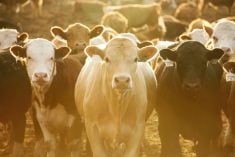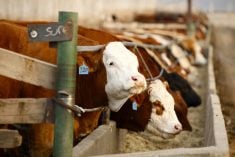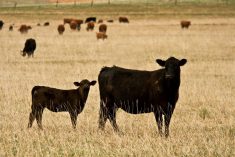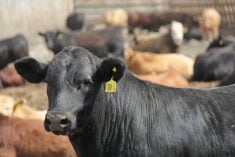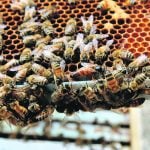Western Canadian feeder cattle markets traded $5-$8 above week-ago levels. The first major yearling sales occurred in southern Alberta, which appeared to kick-start the buying momentum.
Alberta fed cattle prices and wholesale beef values were under pressure; however, feedlot operators were extremely tenacious. Buyers capriciously worked orders throughout the week and by the Friday, quality 850-lb. steers were readily trading into the Lethbridge area at $200. There was a strain on every nerve as feedlots changed limits on buying instructions which eventually changed into “just get ’em” types of orders. This was the first week of the season that Lethbridge-area feedlots stepped forward in full force. This gave the market a new set of lungs in a marathon that’s just begun. Although the larger operators focused on local cattle, this firmer tone is expected to spill over into other areas of Western Canada in subsequent weeks.
Read Also

U.S. grains: Soy futures post biggest monthly gain in nearly five years on China trade optimism
U.S. soybean futures climbed to a 15-month high and posted their biggest monthly gain in nearly five years on Friday following a rally fueled by the prospect of revived exports to China.
Larger-frame, medium- to lower-flesh black steers weighing around 930 lbs. sold for $194 in southern Alberta while similar-quality 850-pounders reached up to $202. In central Alberta, the market was a bit softer with medium-frame, medium-flesh Simmental-cross mixed steers averaging 950 lbs. sold for $181. There were some Charolais-cross larger-frame lower-flesh steers just under 800 lbs. that traded for $211 landed in central Alberta feedlot. Auction markets in Saskatchewan and Manitoba had fewer numbers on offer and the market wasn’t as defined in these provinces.
Markets for calves were once again quite variable. Major buyers are not paying attention to these lighter weight categories. Some decent-quality calves traded for very competitive values to the yearlings. Larger-frame mixed tan steer calves averaging 675 lbs. were quoted at $215 in southeast Saskatchewan.
— Jerry Klassen manages the Canadian office of Swiss-based grain trader GAP SA Grains and Produits Ltd. and is president and founder of Resilient Capital, specializing in proprietary commodity futures trading and market analysis. Jerry consults with feedlots on risk management and writes a weekly cattle market commentary. He can be reached at 204-504-8339.




